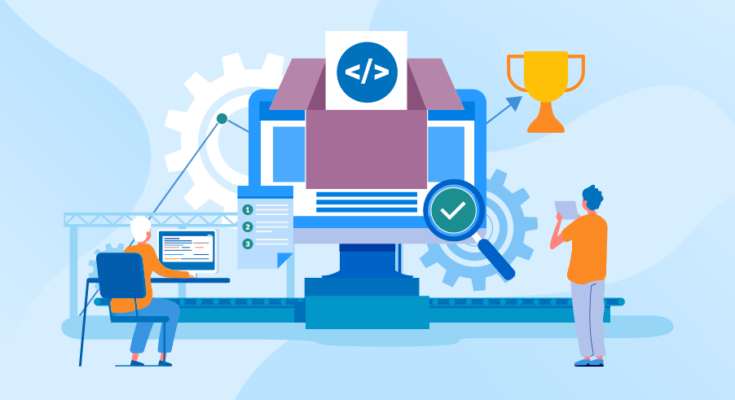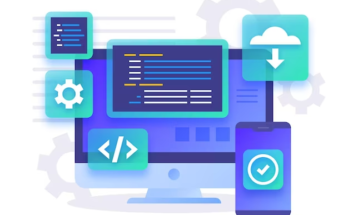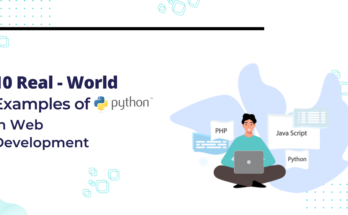Testing products is crucial for ensuring their quality and market success. Implementing a comprehensive software testing life cycle enables organizations to identify potential risks and devise strategies to mitigate them. In this blog, we will share expert tips and best practices to guide you through the process of ensuring product quality using the software testing life cycle. We will outline the seven phases, provide valuable insights into best practices, and offer effective strategies for enhancing your product testing process. Get ready to optimize your approach to product quality!
The Importance of Product Quality and Software Testing
The success of any organization heavily relies on the quality of its products and effective software testing. In today’s fiercely competitive market, delivering high-quality products is crucial for gaining a competitive advantage and fostering customer loyalty. Product quality refers to how well a product meets or surpasses customer expectations, while software testing involves assessing the functionality, reliability, and performance of software to ensure it meets the desired standards.
Product quality and software testing are crucial for customer satisfaction. When customers buy a product, they have certain expectations that it will perform as advertised and meet their needs. If a product has many defects or doesn’t function properly, it can leave the customers dissatisfied and harm the company’s reputation. Conversely, a high-quality product that undergoes thorough software testing is more likely to fulfill customer expectations, resulting in higher levels of satisfaction and positive word-of-mouth.
In addition to ensuring product quality, thorough software testing is essential for identifying and reducing risks. By conducting comprehensive tests before releasing a product, organizations can uncover any potential issues or vulnerabilities and take necessary actions to resolve them. This proactive approach helps prevent costly troubles in the future, such as product recalls, security breaches, or customer dissatisfaction. Ultimately, addressing these risks beforehand saves valuable resources and promotes seamless business operations.
In addition, regulatory compliance for certain industries necessitates a focus on product quality and software testing. Meeting specific regulations and standards is crucial, and organizations can ensure compliance by conducting thorough testing. This ensures that their products meet the necessary requirements, preventing any legal complications or potential fines.
Understanding the 7 Phases of Software Testing Life Cycle
To ensure high product quality through software testing, it’s important to have a thorough grasp of the seven phases comprising the software testing life cycle. Each phase serves a key function in detecting and addressing potential issues before the product is released to market. Let’s delve into these seven phases and gain a deeper understanding of their role in facilitating effective product testing.
Phase 1: Analyzing Requirements
The first phase is to thoroughly analyze and understand the requirements of the product. This step is essential in defining the scope and objectives of the testing process. By having a clear understanding of the product requirements, the testing team can develop comprehensive test cases that cover all aspects of the product.
Phase 2: Test Planning
Once the requirements have been gathered and understood, the testing team proceeds to develop a comprehensive and detailed test plan. This important document outlines the objectives, timelines, and necessary resources for the testing process. By creating a well-structured test plan, the team can effectively organize their activities and ensure that all necessary preparations are completed before commencing with actual testing.
Phase 3: Test Case Development
In this phase, the focus is on creating test cases that align with the identified requirements and objectives from previous phases. These test cases are specifically designed to cover a range of scenarios and functionalities of the product, ensuring thorough testing of all possible situations.
Phase 4: Setting Up the Test Environment
Before testing can begin, it is important to establish the appropriate test environment. This involves installing all required hardware and software, configuring testing tools, and preparing relevant test data. A well-prepared test environment ensures a seamless and accurate testing process.
Phase 5: Test Execution
During this phase, the testing team puts the product through its paces. They run the test cases, document the results, and flag any defects or issues that require attention. It is a crucial stage for uncovering flaws or vulnerabilities in the product and ensuring that it meets the desired quality standards.
Phase 6. Reporting Test Results and Tracking Defects
After the testing phase is complete, the testing team compiles comprehensive test reports that offer valuable information on test coverage, outcomes, and any identified defects or issues. These detailed reports aid stakeholders in making well-informed decisions about whether the product is ready for release.
Phase 7: Test Closure
During this phase, the entire testing process is evaluated, test results are reviewed, and lessons learned are documented. This ensures that all testing activities have been finished and that all necessary documentation and artifacts have been created.
Best Practices for Test Planning and Test Case Design
For effective product testing, it is vital to incorporate best practices in test planning and test case design. These practices not only streamline the testing process but also assist in identifying potential problems and enhancing the overall quality of the product. Here are some expert tips to consider:
- Get a clear understanding of the product requirements. Before testing, it’s important to fully understand what the product needs to do. This includes knowing its functionality, performance expectations, and any limitations. Having this understanding will guide you in creating thorough test cases that cover all aspects of the product.
- Focus on important test cases: It is essential to prioritize test cases based on factors such as risk, impact, and customer requirements. By doing so, resources can be allocated effectively, and critical aspects of the product can receive thorough testing. This approach facilitates early identification and resolution of high-risk issues during the testing process.
- Ensure test cases are independent and reusable: When designing test cases, it is important to make them independent of each other. This helps to prevent any dependencies between the test cases and makes debugging easier if any issues arise. Additionally, creating reusable test cases saves time and effort by allowing for repeated testing of similar functionalities across different versions or modules of the product.
- Testing the product in various scenarios and edge cases is essential. This means creating test cases that cover normal conditions, boundary conditions, and extreme conditions. By conducting comprehensive testing, we can ensure that the product performs reliably in real-world situations and can handle any scenario that may arise.
- Effective testing relies on the use of appropriate and practical test data. By incorporating relevant and realistic data, potential issues that may arise with various inputs can be identified. It is crucial to generate test data that encompasses a diverse range of possibilities, such as valid inputs, invalid inputs, and edge cases.
- Risk-based testing involves prioritizing tests based on the potential impact and likelihood of failure. By identifying and addressing high-risk areas early in the testing process, organizations can reduce the chances of issues arising and enhance the overall quality of the product.
- Continuously reviewing and updating test cases is crucial as the product evolves and requirements change. This ensures that the test cases remain relevant and effective in testing the current version of the product. It’s important to stay proactive in adapting and refining your test cases to keep up with any updates or changes.
Strategies for Efficient Test Execution and Defect Management
Efficient test execution and effective defect management are essential for a successful software testing life cycle. These strategies can help organizations streamline their testing process, promptly address any defects, and enhance the overall quality of their products. Here are some expert-recommended strategies to consider for efficient test execution and defect management:
- To ensure maximum efficiency, it is important to prioritize and sequence your test cases based on their level of risk and criticality. Begin with the high-risk test cases that cover critical functionalities and scenarios. By following this approach, you can identify and address potential issues early in the testing process, minimizing the chances of major defects going unnoticed.
- Creating an efficient test execution requires optimizing the test environment and utilizing relevant and representative test data. It is crucial to configure the test environment to closely resemble the production environment in order to minimize discrepancies. Additionally, using realistic and diverse test data that spans various scenarios is essential. By doing so, potential issues related to different data inputs can be identified, ensuring comprehensive test coverage.
- Implementing test automation can greatly improve the efficiency of your testing procedures. Identify repetitive and time-consuming test cases that are suitable for automation, and invest in tools and frameworks specifically designed for this purpose. Automation enables faster execution, minimizes manual errors, and facilitates quick defect identification. However, it is crucial to find a balance between manual and automated testing to ensure comprehensive test coverage.
- To ensure that defects are addressed promptly and efficiently, it is crucial to establish a streamlined process for defect management. This can be achieved by implementing the following measures:
- Implementing a centralized system will facilitate seamless communication and collaboration between testers, developers, and stakeholders. This will enable all parties involved to have easy access to defect information and updates.
- Clearly outlining the steps involved in addressing defects will help ensure that they are resolved in a timely manner. Establishing escalation paths will also provide guidance on when and how issues should be escalated, preventing delays in resolution. By consistently monitoring and analyzing defect data, patterns and root causes can be identified. This analysis can help inform improvements to the
- To ensure a smooth and efficient testing process, it’s important to regularly review and analyze your procedures. This allows you to identify any bottlenecks, inefficiencies, or areas that need improvement. Gathering feedback from testers, developers, and other stakeholders can provide valuable insights for optimizing your process. Continuously refining and adapting your testing approach will help align it with changing project requirements, technological advancements, and industry best practices.
Tools and Technologies for Automated Testing and Continuous Integration
Automated testing and continuous integration play crucial roles in optimizing software testing life cycles. These practices empower organizations to streamline their testing processes, boost productivity, and elevate product quality. In this section, we will delve into some of the leading tools and technologies that facilitate automated testing and continuous integration.
- Selenium is a widely used tool for automated testing. It’s an open-source framework that enables testers to automate web browsers on various platforms and browsers. Selenium supports multiple programming languages and offers numerous features for effective and dependable testing. These include reliable test recording and playback, parallel test execution, and seamless integration with other testing tools.
- JUnit is another tool commonly used for testing Java applications. It provides a framework for writing and executing tests in a standardized and simple manner, which helps developers identify and resolve issues during the development process. With a variety of assertions and annotations, JUnit offers flexibility for different testing scenarios.
- When it comes to continuous integration, many organizations choose Jenkins. As an open-source automation server, Jenkins allows for the automation of tasks such as building, testing, and deploying software applications. With its seamless integration capabilities with different version control systems and testing frameworks, Jenkins enables continuous delivery of software updates.
- A useful tool to consider is Docker, a platform that allows developers and testers to create, deploy, and operate applications within containers. Docker streamlines the management of testing environments, simplifying the reproduction and debugging of issues across various systems.
Alongside these tools, there are also cloud-based testing platforms like Sauce Labs and BrowserStack available. These platforms provide a diverse range of testing environments and devices, allowing for thorough cross-browser and cross-platform testing.
It’s important to understand that the selection of tools and technologies for automated testing and continuous integration may vary based on the unique needs and requirements of each organization. It is crucial to evaluate different options and choose the ones that align most effectively with the organization’s specific goals and objectives.
The Role of Agile and DevOps in Product Testing
The introduction of Agile and DevOps methodologies has brought about a revolution in product development and testing. These innovative approaches prioritize collaboration, continuous improvement, and faster delivery, leading to a notable impact on product quality and software testing.
Agile methodologies, like Scrum or Kanban, prioritize iterative development and continuous feedback. By working in short sprints, teams can deliver small increments of the product regularly. Agile methodologies promote collaboration among developers, testers, and stakeholders to ensure everyone is aligned on the product’s functionality and quality standards.
The Agile approach also emphasizes the importance of early and continuous testing throughout the development process. By integrating testing activities into each sprint, teams can quickly identify defects and resolve them efficiently. This approach significantly minimizes the time and effort needed for fixing defects, leading to improved product quality.
In contrast, DevOps highlights the importance of merging development and operations teams to create a seamless and efficient software delivery process. This approach encourages close collaboration between developers and testers, sharing responsibilities, and striving towards a shared objective of delivering top-notch software.
DevOps also promotes the automation of different stages in software development and testing. It emphasizes continuous integration (CI) and continuous deployment (CD), enabling quick and frequent software releases. Automated testing plays a crucial role in this process, ensuring that each software release undergoes thorough testing to maintain quality and functionality.
Agile and DevOps methodologies have proven to be beneficial in various aspects of software development, including collaboration, speed, and product quality. These principles facilitate the breakdown of silos between teams and promote efficient communication and collaboration. By embracing Agile and DevOps, organizations can cultivate a culture that prioritizes both quality and accountability.
Emerging Trends in Product Quality and Software Testing
As technology continues to evolve, the field of product quality and software testing is also experiencing notable advancements. These emerging trends are influencing how organizations approach testing and guarantee the quality of their products. In the following section, we will delve into some of these trends and examine how they are affecting product quality and software testing.
- One approach to improving software development is called “shift-left testing”. Traditionally, testing takes place after development is complete. However, the shift-left approach suggests involving testers from the early stages of development. By doing so, organizations can identify and address issues sooner, reducing the time and effort needed for fixing defects.
- Automation has long been a significant trend in software testing. However, with the development of artificial intelligence (AI), organizations are now seeking opportunities to utilize AI for intelligent test automation. By harnessing AI-powered tools, companies can efficiently and accurately analyze vast amounts of data, recognize patterns, and automatically generate test scripts, thus enhancing the overall testing process.
- In today’s technology-driven world, performance engineering plays a vital role in ensuring that applications meet the demands of users. With increasing complexity and heightened expectations, organizations must prioritize performance optimization and scalability. By conducting thorough testing and analysis under various loads and conditions, performance engineering identifies any potential issues before the application is launched to the market. This proactive approach allows companies to deliver high-performing products that satisfy user needs.
- Test data management is crucial for accurate and effective testing. As applications become more complex and comprehensive testing becomes necessary, organizations are prioritizing efficient test data management. This involves creating realistic and representative test data, protecting sensitive information through anonymization, and ensuring the availability of relevant data for different testing scenarios.
- Continuous testing is a crucial aspect of the DevOps culture, allowing organizations to efficiently deliver top-notch software. By automating the testing process and seamlessly integrating it into the development pipeline, organizations can receive real-time feedback on application quality. This emphasis on continuous improvement and feedback loops significantly enhances the testing process.
- As the landscape of cybersecurity threats continues to evolve, organizations are placing greater emphasis on security testing. This crucial practice aims to safeguard sensitive data and preempt potential security breaches. Essentially, security testing involves conducting assessments to identify any weaknesses or vulnerabilities in applications that could potentially be exploited by hackers.
Conclusion
In today’s fast-paced and competitive market, the key to gaining a competitive edge and establishing customer loyalty is ensuring the quality of your product. To achieve this, organizations can adopt a structured approach called the software testing life cycle. This approach helps identify and mitigate potential risks by following seven phases and implementing best practices and strategies. By doing so, you can enhance the effectiveness and efficiency of your product testing process
In this blog, we have emphasized the significance of product quality and software testing. We have outlined the seven key phases of the software testing life cycle and shared effective strategies for test planning, test case design, test execution, and defect management. Furthermore, we have explored various tools and technologies that facilitate automated testing and continuous integration. Additionally, we have explained how Agile and DevOps methodologies contribute to efficient product testing. Lastly, we have touched upon emerging trends in product quality and software testing.
Also Read: Top 8 Most Important Full Stack Development Trends in 2023
To improve the overall quality of your product, shorten time-to-market, and guarantee customer satisfaction, it’s advisable to follow these expert tips. However, keep in mind that effectively managing product quality throughout the software testing life cycle demands expertise and resources. If you lack an in-house testing team or require additional support, consider engaging a software development company in the UK specializing in product testing. Such companies can provide the necessary expertise, tools, and resources to ensure your product meets desired quality standards.
In summary, conducting thorough product testing is crucial for delivering top-notch products that meet customer demands and contribute to the success of your business. By following the software testing life cycle and implementing best practices and strategies, you can enhance your testing process and minimize potential risks. It’s important to stay informed about the latest trends and technologies in product quality and software testing to maintain a competitive edge. Remember, the quality of your product reflects your brand’s values and dedication to customer satisfaction. So, prioritize product testing and ensure that your offering stands out in the market.




